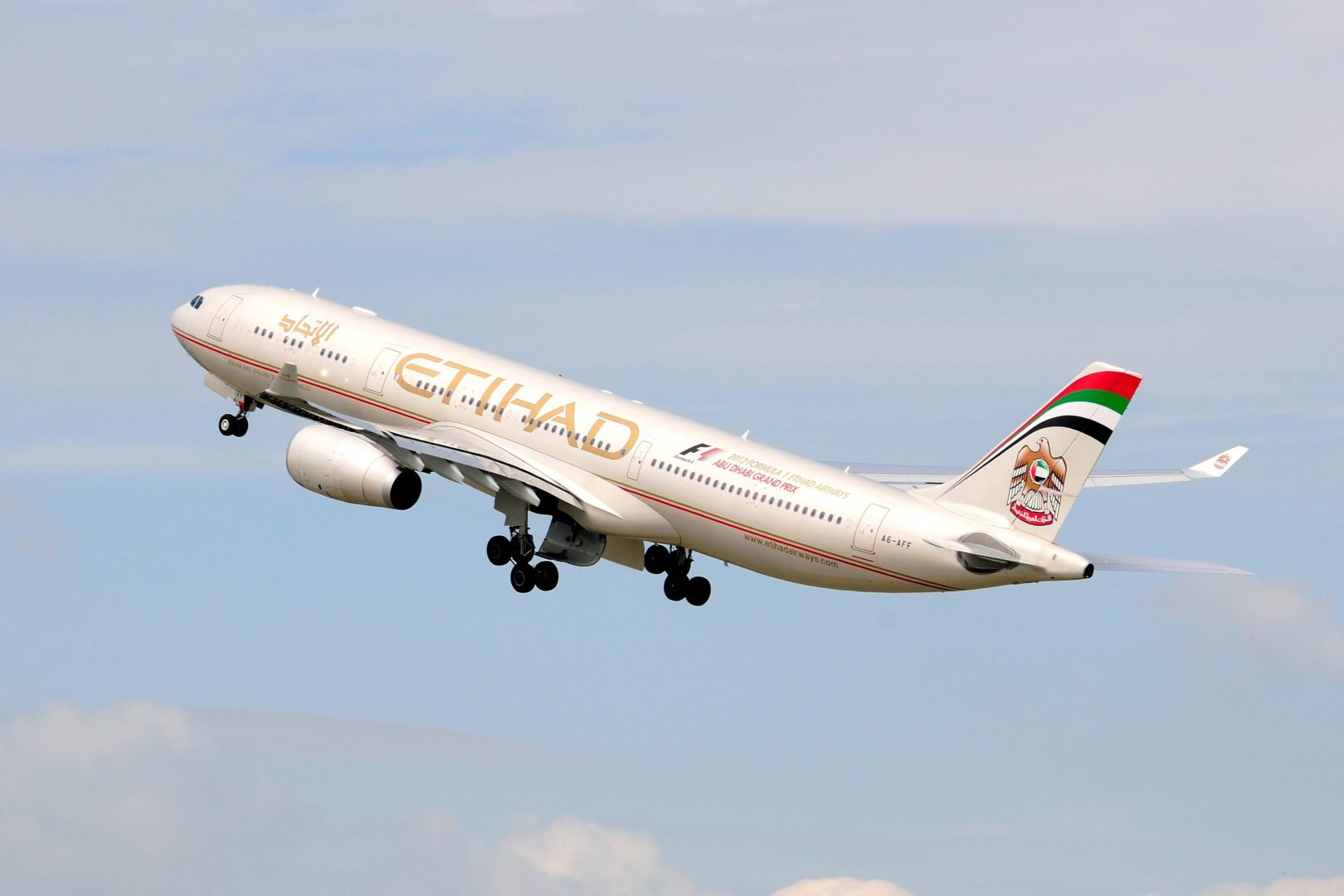

Abu Dhabi-based Etihad Airways registered losses of $1.52bn in 2017, down $432m compared with the previous year.
The losses are from the carrier’s core airline operations, which exclude “any extraordinary or one-off items”. The airline’s 2016 losses, previously reported at $1.87bn, have been correspondingly restated to $1.95bn, the firm said in a statement.
Revenues in 2017 increased by 1.9 per cent to $6.1bn.
Etihad reduced administration and general expenses by 14 per cent, or roughly $162m, in 2016.
It added that a strong focus on efficiency delivered a 7.3 per cent reduction in unit costs, despite the airline incurring $337m from higher fuel prices.
The airline said it carried 18.6 million passengers at a 78.5 per cent load factor in 2017, while available seat kilometres (ASKs) during the year increased by 1 per cent reflecting a “significant moderation of capacity growth, and contributing to an improvement in the quality of the airline’s revenues”.
However, Etihad Cargo’s revenues, accrued from carrying 552,000 tonnes of cargo, declined by 0.8 per cent despite a 6 per cent capacity reduction.
The company cited that passengers and cargo yields improved “as a result of capacity discipline, changes to the network with an increased focus on point-to-point traffic, leveraging of technology and improving market conditions.”
“This was a pivotal year in Etihad’s transformation journey,” Mohamed Mubarak Fadhel al-Mazrouei, chairman of the board, Etihad Aviation Group, said in a statement. “The Board, new executive leadership team and all our employees worked extremely hard to navigate the challenges we faced. We made significant progress in driving improved performance and we are on track in 2018.”
Etihad Airways received 12 new aircraft in 2017 including two Airbus A380s, nine Boeing 787-9 Dreamliners and an Airbus A330F. These aircraft replaced 16 older Airbus passenger and cargo aircraft, reducing the airline’s average fleet age to six years and its active fleet from 119 to 115 .
Citing falling passenger demand, the airline suspended a number of routes in 2017-18 including flights to San Francisco and Dallas/Fort Worth, both in the US, Entebbe (Uganda), Tehran (Iran) and Venice (Italy). However, a new route between Abu Dhabi and Baku (Azerbaijan) was launched in March 2018 and services to Barcelona (Spain) are expected to start on 21 November.
The carrier said it introduced the Airbus A380 on one of its two daily services to Paris’ Charles de Gaulle airport, and the Boeing 787-9 Dreamliner on services to Amsterdam, Athens, Amman, Beijing, Madrid, Melbourne, Nagoya, Seoul and Shanghai.
Etihad Airways financial results
| 2017 | 2016 | |
| Passenger revenue ($bn) | 5.0 | 4.9 |
| Cargo revenue ($bn) | 0.9 | 0.9 |
| Total revenue ($bn) | 6.1 | 5.9 |
| Core airline profit (loss) ($bn) | (1.52) | (1.95) |
| Total passengers (million) | 18.6 | 18.5 |
| Available seat kilometres (billion) | 115.0 | 113.9 |
| Seat factor (%) | 78.5 | 78.6 |
| Number of aircraft | 115 | 119 |
| Cargo tonnage (tonnes ‘000) | 552 | 596 |
Source: Etihad Airways
In May, the US and the UAE agreed to resolve their years-long Open Skies dispute, with the “voluntary agreement” stipulating that the UAE airlines ensure financial transparency by providing detailed and regular financial statements “once the ongoing restructuring at Etihad Airways is completed”.
The dispute arose from allegations made by major US carriers that GCC airlines including Etihad Airways and Dubai-based Emirates Airline received unfair government subsidies over a 10-year period.
You might also like...

Lunate acquires 40% stake in Adnoc Oil Pipelines
26 April 2024

Saudi Arabia's Rawabi Holding raises SR1.2bn in sukuk
26 April 2024

Iraq oil project reaches 70% completion
26 April 2024

Samana announces $272m Dubai Lake Views project
26 April 2024
A MEED Subscription...
Subscribe or upgrade your current MEED.com package to support your strategic planning with the MENA region’s best source of business information. Proceed to our online shop below to find out more about the features in each package.




